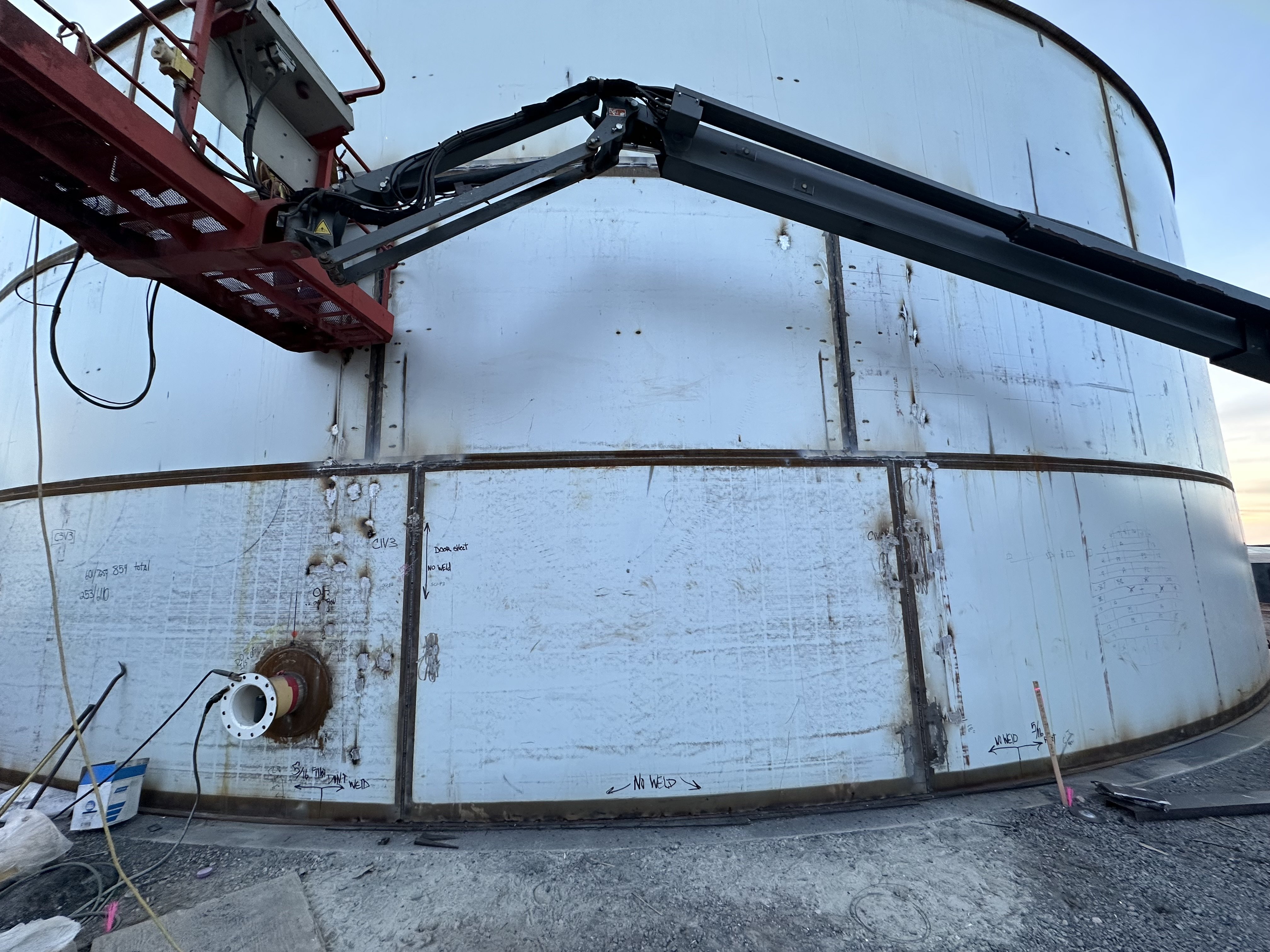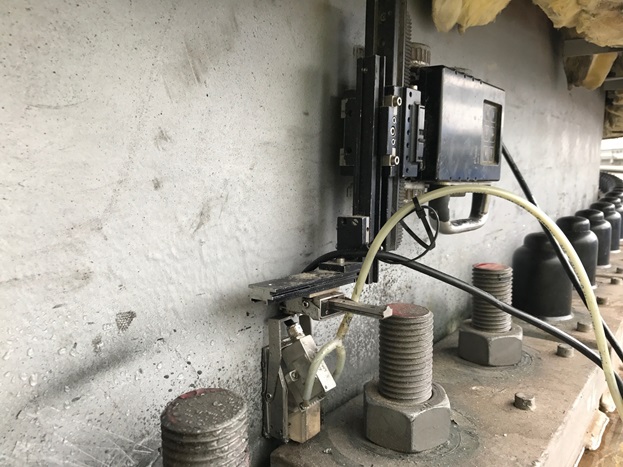Exactly How Tank Welding Inspection Stops Future Structural Failures
Exactly How Tank Welding Inspection Stops Future Structural Failures
Blog Article
An In-depth Overview of Container Welding Assessment Requirements and Methodologies for Improved Weld Top Quality and Performance
The relevance of welding evaluation requirements in the production of storage tanks can not be overemphasized, as they offer as the foundation for guaranteeing weld integrity and operational reliability. Different evaluation strategies, including aesthetic analyses and advanced non-destructive testing techniques, are critical in identifying possible imperfections that could compromise efficiency. Moreover, adhering to regulative standards not just improves weld high quality however also reduces the danger of expensive failures. As we explore the nuances of these methodologies, it ends up being necessary to consider just how a systematic strategy can revolutionize existing techniques and cause substantial enhancements in results.
Significance of Welding Inspection Criteria

Welding examination standards include a range of requirements, including product specifications, welding treatments, and qualifications of employees associated with the welding process. By enforcing these standards, organizations can methodically determine and fix prospective issues, consequently decreasing the possibility of pricey repairs or tragic failures. Rigorous evaluation techniques cultivate a culture of liability and precision, encouraging welders to preserve high degrees of workmanship.

Typical Welding Inspection Techniques


Ultrasonic Checking (UT) is one more prevalent technique, making use of high-frequency acoustic waves to discover inner defects that may not be visible on the surface. This method is especially reliable for determining voids or additions within the weld steel. Magnetic Bit Evaluating (MT) is likewise commonly utilized, specifically for ferromagnetic products, as it discloses surface and near-surface flaws through the application of magnetic fields and ferrous particles.
Additionally, Fluid Penetrant Testing (PT) finds surface-breaking defects by applying a penetrant to the weld and after that making use of a programmer to extract the penetrant. Each of these methods adds to a comprehensive evaluation method, making certain that welds fulfill the rigid quality requirements needed in container building.
Governing Criteria and Compliance
Regulative standards and compliance are crucial elements in making certain the security and reliability of welded structures in storage tank construction - Tank Welding Inspection. These criteria serve to develop minimum needs for material properties, welding treatments, and assessment practices, thereby decreasing the danger of structural failures and improving overall performance
Trick organizations, such as the American Culture of Mechanical Engineers (ASME) and the American Welding Culture (AWS), supply standards that are extensively embraced in the industry. Compliance with these criteria not just makes sure adherence to best methods yet also satisfies legal and contractual responsibilities, protecting the passions of stakeholders.
Governing bodies usually mandate adherence to details codes, such as ASME Code Section IX for welding qualifications and API 650 for welded storage tanks. These codes outline demands for welding techniques, certifications of personnel, and testing approaches to confirm weld stability.
Regular audits and assessments are important to preserving conformity, as they help determine deviations from established requirements. Non-compliance can cause considerable fines, job hold-ups, and safety dangers. Hence, a robust understanding of regulatory criteria and a dedication to conformity are extremely important in attaining premium and resilient bonded container frameworks.
Non-Destructive Checking Approaches
Exactly how can the integrity of bonded frameworks be ensured check that without causing damage? Non-destructive screening (NDT) approaches offer a robust remedy, enabling assessors to review weld quality without jeopardizing the material - Tank Welding Inspection. Among the most common NDT techniques are ultrasonic screening (UT), radiographic screening (RT), magnetic fragment screening (MT), and color penetrant screening (PT)
Radiographic testing entails passing X-rays or gamma rays through the weld, Website producing pictures that reveal architectural defects such as cracks or spaces. This method is indispensable for assessing the honesty of complex welds.
Magnetic bit testing is fit for ferromagnetic materials, where magnetic areas reveal surface area and near-surface gaps. Dye penetrant screening utilizes a liquid dye to highlight surface-breaking defects, making it an efficient technique for non-porous materials.
Each of these NDT techniques has unique advantages, enabling extensive evaluations tailored to particular materials and welding processes. By implementing these techniques, sectors can guarantee the dependability and safety of bonded frameworks, inevitably boosting total efficiency.
Enhancing Weld High Quality Via Inspection
Effective inspection plays a crucial duty in improving weld top quality, functioning as an essential checkpoint in the fabrication process. By recognizing possible flaws early, assessments reduce the risk of endangered architectural integrity and make sure compliance with industry criteria. Utilizing a mix of aesthetic evaluations, non-destructive screening (NDT) techniques, and mechanical evaluations, assessors can detect issues such as porosity, fractures, and incomplete fusion.
Implementing a robust evaluation procedure not just boosts the general quality of welds yet also cultivates a culture of liability among welders and makers. Regular training and qualification of examination personnel ensure that they are equipped with the required skills to acknowledge and address prospective troubles efficiently. see here now This aggressive method lessens rework and associated expenses, eventually adding to forecast effectiveness.
Additionally, extensive documentation of evaluation findings gives beneficial understandings into repeating issues, assisting in constant enhancement in welding practices. By leveraging advanced innovations, such as automated ultrasonic testing or digital radiography, weld quality can be improved via much more precise evaluations. Finally, a strenuous assessment process is essential in achieving high-quality welds, making certain security, reliability, and long life in storage tank manufacture.
Verdict
In verdict, the implementation of rigorous tank welding assessment criteria and methodologies is vital for making sure weld integrity and efficiency. By using a combination of visual examinations, non-destructive testing techniques, and adherence to regulatory standards, companies can efficiently recognize and mitigate possible defects.
Report this page